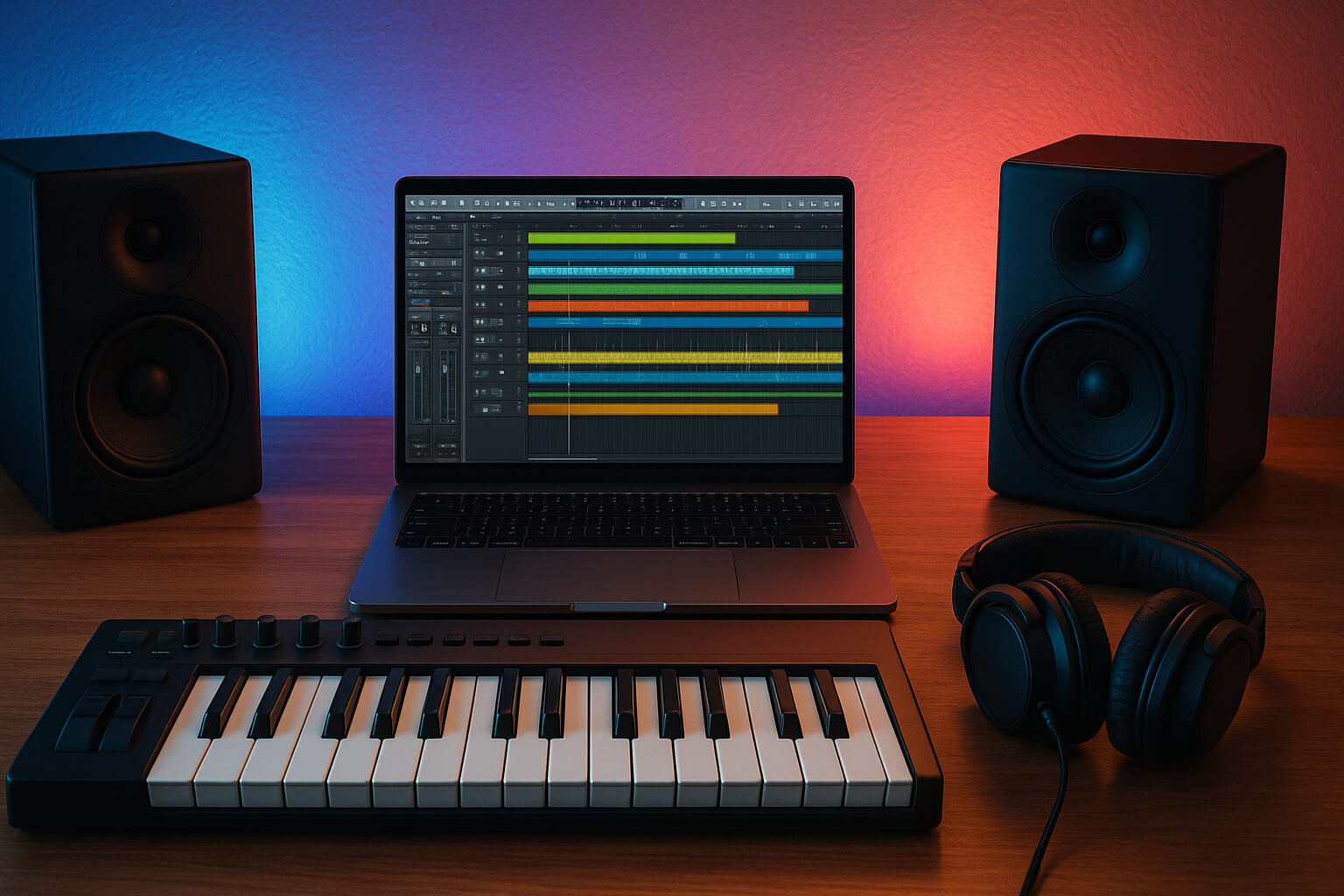The Basics of Music Production Software DAWs

In today’s digital-first music landscape, Digital Audio Workstations (DAWs) are the engine behind everything from bedroom beats to Grammy-winning albums. Whether you’re producing hip-hop tracks, electronic remixes, or acoustic demos, a DAW gives you the tools to bring your sound to life.
This guide walks you through what a DAW is, the key features to look for, and how to choose the one that matches your creative workflow.
What is a DAW?
A Digital Audio Workstation is software used for recording, editing, mixing, and producing audio files. Think of it as your studio-in-a-box — complete with virtual instruments, effects plugins, and multi-track recording.
Popular DAWs include:
- Ableton Live – Known for live performance capabilities and loop-based production
- FL Studio – Ideal for beat-making and producers just starting out
- Logic Pro X – Feature-rich and favored by Mac-based producers
- Pro Tools – The studio industry standard for mixing and mastering
- Reaper – Highly customizable and affordable, with a loyal following
Want a deeper look at how each DAW compares? This overview of DAW software breaks it down in detail.
Core Features You’ll Find in Most DAWs
A good DAW should offer a well-rounded toolkit. Here are some features that define most digital audio workstations:
- Multi-Track Recording – Record vocals, instruments, or external audio across multiple channels
- MIDI Sequencing – Create and edit music using virtual instruments
- Arrangement & Timeline Editing – Organize your track by building sections visually
- Built-In Effects & Plugins – Apply reverb, EQ, compression, and more
- Mixing & Mastering Tools – Finalize your track for release
- Third-Party Plugin Support (VST/AU) – Expand your sound palette with additional instruments and effects
Not sure what all those effects actually do? This guide to compression in music production breaks it down for beginners.
How to Choose the Right DAW for You
Every DAW has its strengths. Ask yourself these questions:
- What genre do I produce? (Electronic producers often lean toward Ableton Live or FL Studio.)
- What OS am I using? (Logic is Mac-only, while others are cross-platform.)
- What’s my experience level? (GarageBand or BandLab are great for beginners.)
- What’s my budget? (Some DAWs are free, others require a license.)
Also, consider your gear. For example, if you’re investing in an audio interface, check out this intro to choosing the right interface.
Learning Your First DAW: Start Small
You don’t need to master every feature on Day 1. Here's how to begin:
- Watch step-by-step tutorials on YouTube, Udemy, or Coursera
- Record basic vocals or loops and layer them
- Explore MIDI instruments and automation tools
- Practice EQ and compression techniques (like those discussed in this mixing tutorial)
- Export and share your first project to track progress over time
If you're interested in diving deeper into production, consider this free AI music generator that can help you jumpstart track ideas quickly.
Bonus: Free Tools to Enhance Your DAW Setup
Conclusion
- A DAW is more than software — it’s your creative playground. Choosing the right one, learning its workflow, and using it consistently will empower you to make professional-quality music at home. Don’t worry about mastering everything at once; just start experimenting and let your music evolve.
- Whether you’re just learning what EQ is or diving into automation curves, your DAW is the canvas where your sound takes shape
